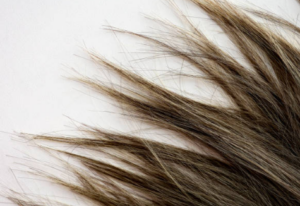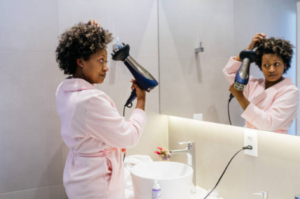Dry Hair Dilemma

Healthy, luscious locks are the epitome of beauty, but for many, achieving that ideal can be a struggle, especially when dealing with dry, lackluster hair. Dry hair not only feels brittle and rough but can also appear dull and lifeless. While slathering on moisturizing products might seem like the solution, it’s essential to understand the underlying causes of dryness to effectively address the issue. In this comprehensive guide, we’ll delve into the various culprits behind dry hair, from environmental factors to hair care practices, and explore actionable tips to restore moisture and vitality to your locks.
Understanding Dry Hair
Before we dive into the culprits behind dry hair, let’s first understand what causes this common concern. Dry hair occurs when the hair shaft lacks adequate moisture and natural oils, resulting in a rough, brittle texture and a dull appearance. While genetics can play a role in hair texture and moisture levels, several external factors can contribute to dryness:
- Environmental Factors: Environmental factors such as exposure to sun, wind, humidity, and pollution can strip the hair of its natural oils and moisture, leading to dryness and damage. UV radiation from the sun can cause protein degradation and lipid oxidation in the hair, resulting in weakened strands and increased susceptibility to dryness and breakage. Similarly, harsh weather conditions, such as cold temperatures and low humidity, can deplete the hair’s moisture levels and exacerbate dryness.
- Heat Styling: Excessive heat styling, such as blow-drying, flat ironing, and curling, can cause significant damage to the hair cuticle, leading to moisture loss and dryness. High temperatures can disrupt the hair’s natural lipid barrier, allowing moisture to escape and leaving the hair vulnerable to damage. Additionally, frequent use of heat styling tools without proper heat protection can cause thermal damage, leading to dry, brittle strands and split ends.
- Overwashing: Washing the hair too frequently or using harsh shampoos can strip away the scalp’s natural oils, leaving the hair dry and prone to breakage. While it’s essential to cleanse the scalp and remove dirt, oil, and product buildup regularly, overwashing can disrupt the scalp’s natural balance and compromise the hair’s moisture barrier. Opt for gentle, sulfate-free shampoos and consider reducing the frequency of washing to maintain optimal moisture levels.
- Chemical Treatments: Chemical treatments such as hair coloring, bleaching, perming, and straightening can compromise the hair’s structure and integrity, leading to dryness, brittleness, and breakage. These treatments often involve harsh chemicals that penetrate the hair shaft and disrupt its natural structure, resulting in moisture loss and damage. If undergoing chemical treatments, it’s essential to follow proper precautions and use hydrating and repairing treatments to minimize damage and maintain moisture balance.
- Poor Hair Care Practices: Certain hair care practices, such as vigorous towel-drying, rough brushing, and using abrasive hair accessories, can contribute to dryness and damage. Aggressive manipulation of the hair can cause friction and mechanical damage, leading to cuticle disruption and moisture loss. Instead, opt for gentle hair care practices, such as patting the hair dry with a soft towel, using a wide-tooth comb to detangle wet hair, and avoiding tight hairstyles that pull on the hair shaft.
Tips for Restoring Moisture to Dry Hair
Now that we’ve identified the culprits behind dry hair, let’s explore some actionable tips for restoring moisture and vitality to your locks:
- Hydrating Shampoo and Conditioner: Start by choosing hydrating shampoo and conditioner formulas specifically designed for dry or damaged hair. Look for products infused with moisturizing ingredients such as coconut oil, shea butter, argan oil, and glycerin to nourish and hydrate the hair from root to tip. Avoid shampoos containing sulfates, which can strip away natural oils and exacerbate dryness.
- Deep Conditioning Treatments: Incorporate weekly deep conditioning treatments into your hair care routine to replenish moisture and repair damage. Choose rich, nourishing hair masks or deep conditioners formulated with hydrating ingredients such as avocado oil, olive oil, honey, and keratin. Apply the treatment to clean, damp hair, focusing on the mid-lengths and ends, and leave it on for the recommended duration to allow the ingredients to penetrate deeply into the hair shaft.
- Leave-In Conditioner: Invest in a leave-in conditioner or detangling spray to provide ongoing hydration and protection throughout the day. These lightweight formulas can help smooth the hair cuticle, reduce frizz, and improve manageability without weighing down the hair. Apply a small amount of leave-in conditioner to damp or dry hair, focusing on the ends, and comb through to distribute evenly.
- Limit Heat Styling: Reduce the frequency of heat styling and minimize the use of hot tools to prevent further damage and moisture loss. When heat styling is necessary, use a heat protectant spray or serum to shield the hair from thermal damage and minimize moisture evaporation. Opt for low or medium heat settings and avoid excessive heat exposure to minimize the risk of dryness and breakage.
- Protective Hairstyles: Consider incorporating protective hairstyles into your styling repertoire to minimize manipulation and reduce damage. Protective styles such as braids, twists, buns, and updos can help shield the hair from environmental stressors, friction, and mechanical damage, promoting moisture retention and overall hair health.

Dry hair can be a frustrating and challenging issue to deal with, but with the right knowledge and approach, it’s possible to restore moisture and vitality to your locks. By understanding the culprits behind dryness, such as environmental factors, heat styling, overwashing, chemical treatments, and poor hair care practices, you can take proactive steps to address the underlying causes and implement effective solutions. Whether it’s choosing hydrating hair care products, incorporating deep conditioning treatments, minimizing heat styling, or opting for protective hairstyles, there are plenty of strategies you can use to nourish and revitalize your hair from the inside out. With patience, consistency, and a little TLC, you can achieve healthy, hydrated hair that shines with vitality and beauty.

